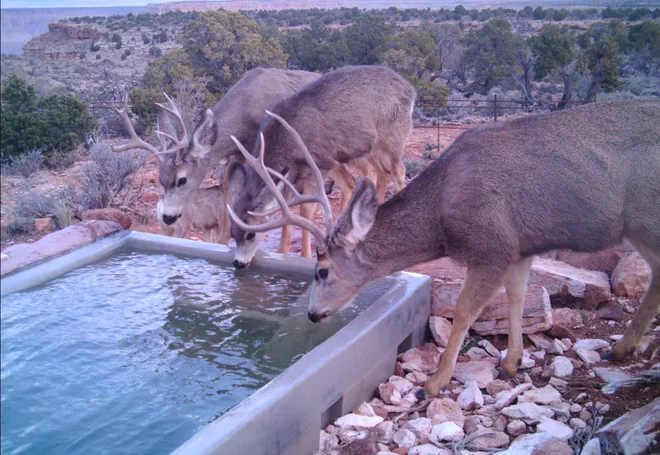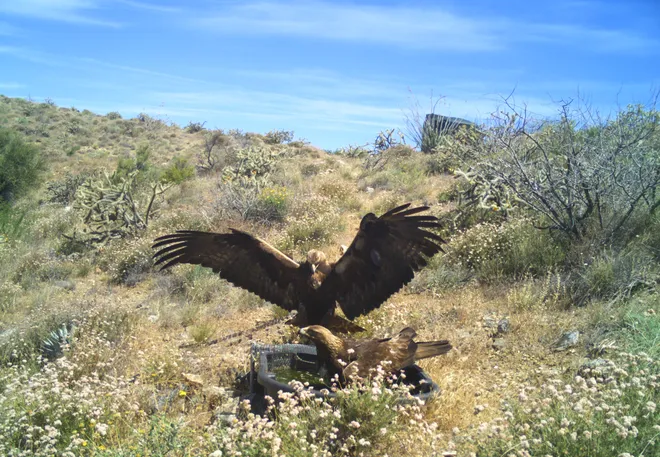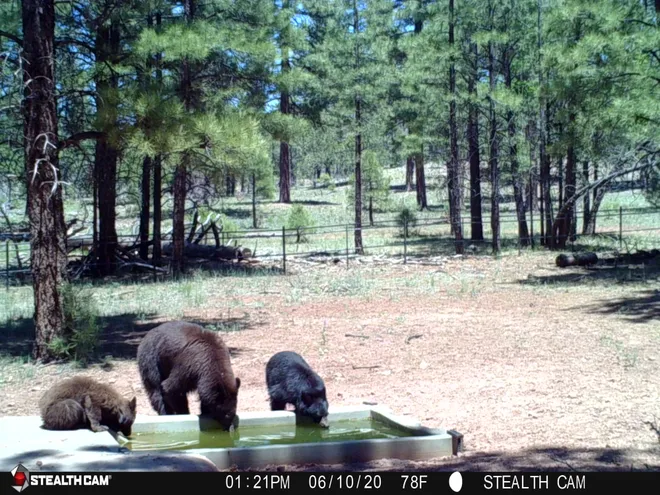Amid record-breaking heat, Arizona wildlife relies on trucked-in water to survive summer
More than 400,000 gallons of water has been provided to animals in remote areas across Arizona this summer, the Arizona Game and Fish Department has said.
While 400,000 is the department's yearly average, this year they are expecting to surpass that given the record-breaking heat and lack of rainfall, Joseph Currie, habitat planning program manager for Game and Fish told USA TODAY.
How is the water distributed?
The water is distributed through 3,000 water catchments that have been installed across the state, including in remote areas, to ensure that wildlife does not die of dehydration, as the state experiences intense heat waves and high temperatures.
Arizona heat:Why Phoenix could expect a drier, warmer than normal fall
“We’ve placed water catchments that collect rainwater throughout the Arizona desert and even in the forest for these animals,” said Currie, explaining that when there is little rainfall, the departments and its volunteers make trips out to deliver water themselves.
"If there's enough rain in a given year, it should fill up the catchment although, like this year, we haven't got the rain that we usually expect. And then it's extra hot, so the animals are actually using more water than normal," said Currie. "So that requires us to haul water."
The catchments have been in place since the 1940s, according to Currie. Though some of them have fallen into disrepair, the department makes efforts to maintain them so that the animals are not left without water.

Delivering the water
Water to these catchments is delivered on as-needed basis explained Currie. He said that they do not need to haul water during the winter because the weather is cooler and wetter. But once April hits and the summer heat begins to roll in, their department springs into action.
"May is our driest month of the year typically," said Currie. "Wildlife managers of different areas in Arizona will start checking these waters and if they're getting low, they will request water."
He said that since volunteers and officials have to travel thousands of miles to deliver water, they work on a rotational basis to ensure that water is hauled every day, typically from May till the end of September.
'We're really hurting':Donkey sanctuary confronts metro Phoenix's heat, water shortage

On how things are different this year, Currie said that because the state experienced a wet winter and spring, the water catchments were able to fill really well and they did not need to start hauling water until July when it became the hottest month on record for Phoenix and Arizona.
"The animals were using way more water than normal," said Currie. "It's been so hot and dry and we're not getting any monsoon rain so there's no relief."

The water catchments provide water to animals of all kinds from bees to bald eagles and elks, said Currie.
"Pretty much any animal that's out there in Arizona," said Currie. "...Bighorn sheep, lizards, snakes, chipmunks, squirrels. I mean, you name it."
The department also employs helicopters in areas that are harder to access, especially those on high elevations with no road access. Currie said that some animals like the bighorn sheep reside in these areas.
The record heat is also hard on the department's equipment, said Currie, explaining that the water trucks break down more often and that their tires wear out more quickly because they get so hot.
Climate Point:July heat had 'the fingerprints of climate change'
Where does the water come from?
As for where the department gets its water, Currie said that there are multiple sources including cities, which sell the department water, and the Central Arizona Project, which is a big canal that brings Colorado River water to the center of Arizona. Some people also allow the department access to their wells. In remote and far-off areas, where water is already scarce, they use reclaimed water, which has been approved for animal consumption.
Despite the challenges, Currie said these trips are essential for wildlife survival.
“If we were to not do this, we would see severe reductions in the population of all the animals out there,” he said.
Disclaimer: The copyright of this article belongs to the original author. Reposting this article is solely for the purpose of information dissemination and does not constitute any investment advice. If there is any infringement, please contact us immediately. We will make corrections or deletions as necessary. Thank you.







